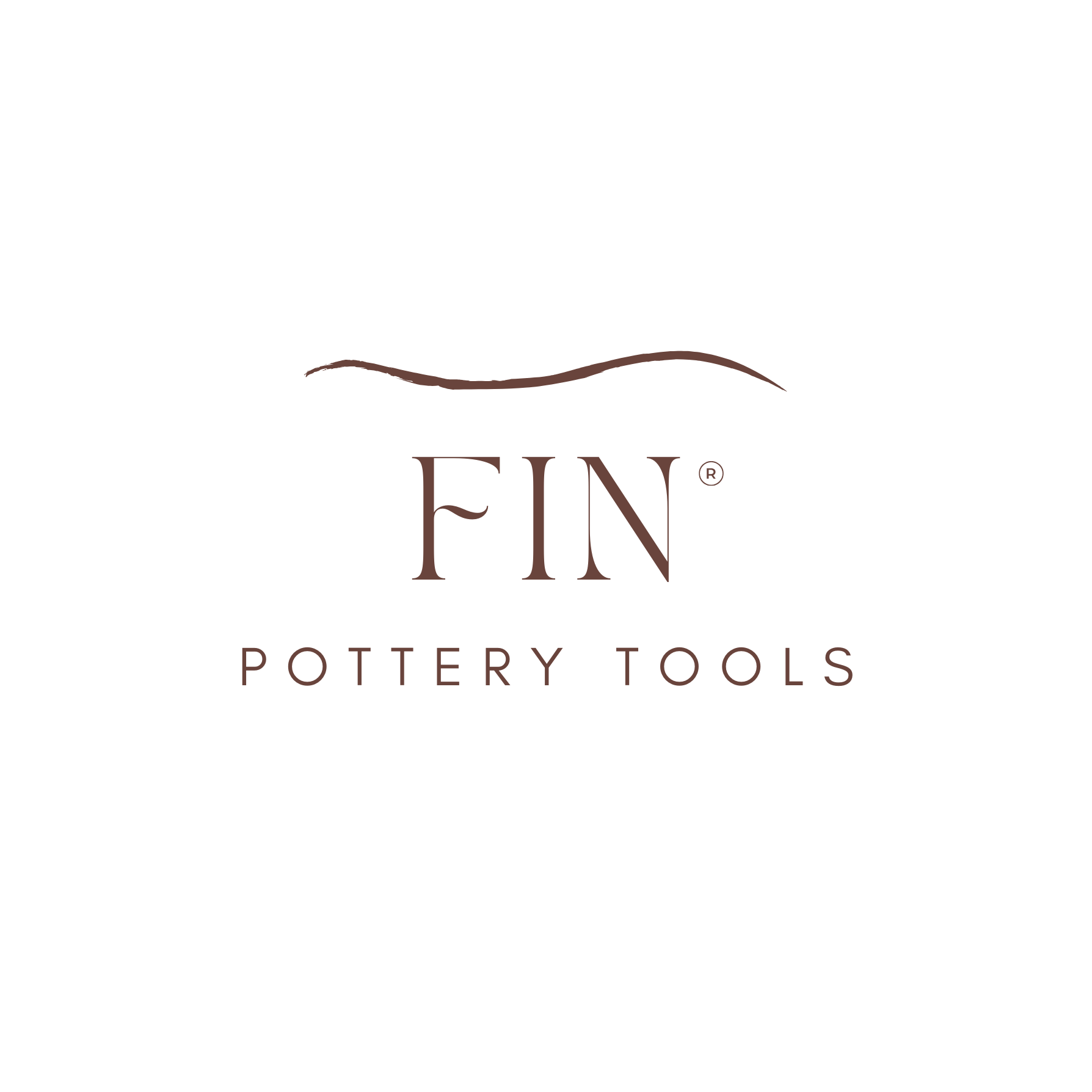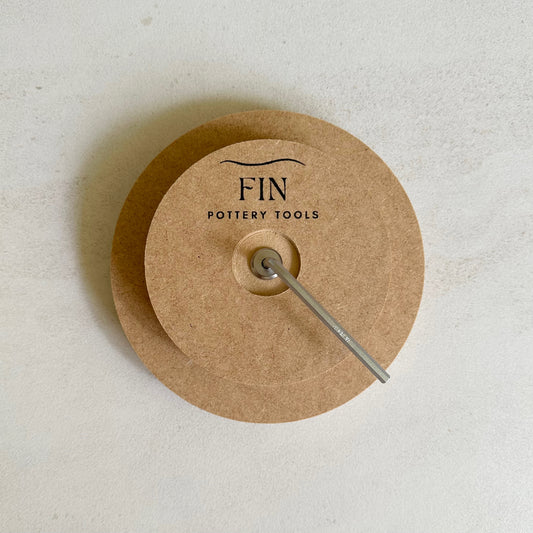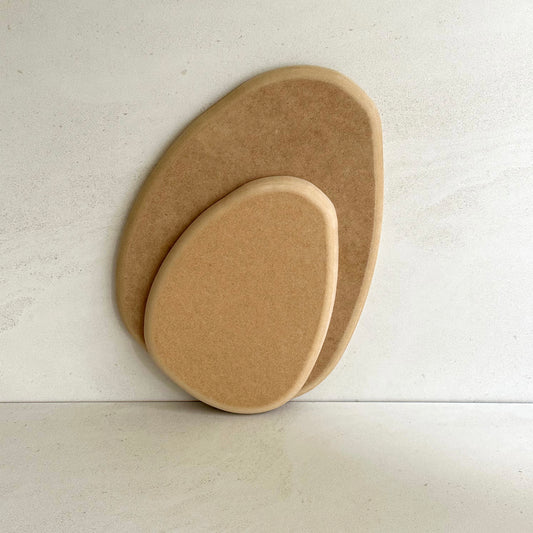So you've made a plate or dish, and you've checked on it after a few days of drying and you see a crack. It's frustrating — but also avoidable!
Let's take a look at the reasons why cracks in plates happen, and how you can avoid them.

Why do cracks happen?
The main cause of cracking in plates is uneven drying, due to how a slab of clay is prepared and/or the way you dry your wares.
1. Uneven slab thickness
If your slab of clay is thicker in some areas and thinner in others, when your plate is drying, those thinner areas will dry and shrink faster, causing tension and eventually cracks.
To ensure that the entire plate dries at a similar rate, your slab needs to be even in thickness.
If you can, use a slab roller. If you don't have access to a slab roller, make sure you're using rolling guides and — importantly — a rolling pin that is long enough to reach the guides and evenly roll out the slab.
Whether you're using a slab roller or rolling pin, always rotate your slab a few times so you're rolling the clay in all directions.
2. Uneven drying
Slow and even is key to drying plates.
As your plate dries, you want the piece to dry at the same rate. When one part of the plate dries more quickly, it causes tension and can at best make your plate warped, and at worst cause cracks.
We recommend drying plates slowly under plastic, and away from drafts of wind to avoid uneven drying.
To reduce the chance of it warping, you can also place a weight (such as a handmade sandbag) on top of the plate to weight it down while drying.
Tips to avoid cracks in plates:
- Make sure your clay slab is even in thickness. A slab roller is ideal for rolling clay evenly. If you don't have a slab roller, make sure you're using rolling guides and a rolling pin that is long enough to reach the guides and evenly roll out the slab. Rotate your slab a few times so you're rolling in all directions.
- Dry your plate slowly and evenly. Dry your plates under plastic, away from drafts of wind, very slowly.
- Bisquefire your plates on their side. It might sound wacky if it's the first time you're hearing it, but stacking your plates upright side by side in the kiln (during the bisque fire not glaze fire!) has great results — stacking plates and dishes on their rims in a vertical configuration allows for better airflow for the water to be driven off.
- Try a different clay body. If you're not having luck with one clay body and consistently getting cracks despite following the above tips, try another clay that is made for handbuilding — these typically contain grog and are sturdier to work with and can handle more tension during drying.
Check out our full range of high-quality Australian made pottery forms here.





